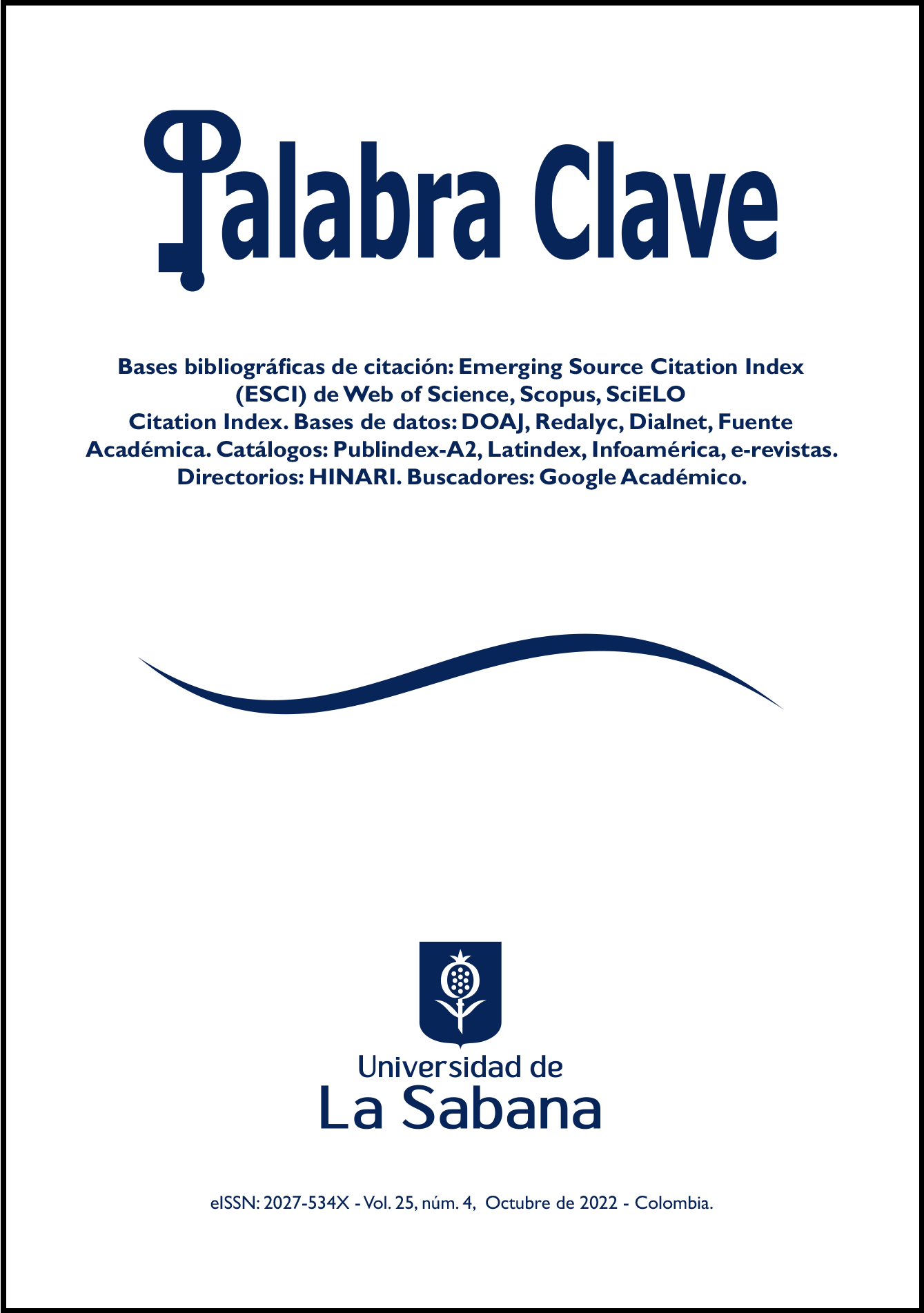Brand Communities on Instagram: Study of the Strategies of the World’s Best Universities
DOI:
https://doi.org/10.5294/pacla.2022.25.4.5Keywords:
Content analysis, comparative analysis, interactive communication, community, social networks, social media, universityAbstract
Social media, including Instagram, favor the construction of university communities beyond the campus due to their audiovisual nature and consolidation as communication tools in the educational field. Thus, the main objective is to analyze the strategies implemented on the platform by the top five world universities according to the Shanghai Ranking to determine the actions aimed at promoting an intentional community and assess the impact caused by them in the real-life community. For this research, a quantitative and qualitative methodology was chosen, performing an impact analysis of the profiles using the Fanpage Karma tool and a content analysis of the semiotics of discourse with Excel and SPSS statistical software. We examined 394 posts by the Universities of Harvard, Stanford, Cambridge, Massachusetts Institute of Technology (MIT), and California Berkeley between September 1 and December 31, 2021, the first three months of the academic year typical to the United States and the United Kingdom. The results show a non-proportional relationship between post frequency and impact and the existence of shared semiotic variables on which the message is based. However, a dichotomy is found between the actions of North American universities and the British one, reflecting the influence of idiosyncratic factors on the design of social media strategy.
Downloads
References
Alcolea Parra, M., Rodríguez Barba, D. y Núñez Fernández, V. (2020). El uso corporativo de Instagram en las universidades privadas españolas. Estudio comparativo de treinta y cinco universidades. Ámbitos. Revista Internacional de Comunicación, 47, 109-134. https://doi.org/10.12795/Ambitos.2020.i47.06
Bazán, H. (2019). Las universidades 3.0. Revista Perspectiva, 20(3), 9-11. https://doi.org/10.33198/rp.v20i3.00038
Bonilla, M. R., Perea, E., del Olmo, J. L. y Corrons, A. (2019). Insights into user engagement on social media. Case study of a higher education institution. Journal of Marketing for Higher Education, 30(1),1-16. https://doi.org/10.1080/08841241.2019.1693475
Brodie, R., Juric, B., Illic, A. y Hollebeek, L. (2011). Customer Engagement: Conceptual Domain, Fundamental Propositions and Implications of Research. Journal of Service Research, 14(3), 252-271. https://doi.org/10.1177/1094670511411703
Chen, L., Yuan, L. y Zhu, Z. (2021). Empirical study of consumer participation motivation in value cocreation within cultural and creative virtual brand communities. Asia Pacific Journal of Marketing and Logistics, 33(7), 1630-1647. https://doi.org/10.1108/APJML-05-2020-0363
Cheung, M.L., Pires, G., Rosenberger, P. J., Leung, W. y Ting, H. (2021). Investigating the role of social media marketing on value co-creation and engagement: An empirical study in China and Hong Kong. Australasian Marketing Journal, 29(2). https://doi.org/10.1016/j.ausmj.2020.03.006
Dhanesh, G.S. (2017). Putting engagement in its proper place: state of the field, definition and model of engagement in public relations. Public Relations Review, 43(5), 925-933. https://doi.org/10.1016/j.pubrev.2017.04.001
García García, M. (2018). Universidad y medios sociales. Gestión de la comunicación en la universidad española. Revista Prisma Social, 22, 20-36. https://revistaprismasocial.es/article/view/2535
Lafuente-Ruiz-de-Sabando, A., Zorrilla, P., y Forcada, J. (2018). A review of higher education image and reputation literature: knowledge gaps and a research agenda. European research on management and business economics, 24(1), 8-16. https://doi.org/10.1016/j.iedeen.2017.06.005
Liu, S., Xiao, W., Fang, C., Zhang, X. y Lin, J. (2020). Social support, belongingness, and value co-creation behaviors in online health communities. Telematics and Informatics, 50(3), 101398, 1-18. https://doi.org/10.1016/j.tele.2020.101398
Marauri Castillo, I., Pérez Dasilva, J.A. y Rodríguez González, M.M. (2014). La búsqueda de la comunidad de marca en las redes sociales. Los casos de Telepizza, Vips y Burger King. Trípodos, 37, 133-149. http://www.tripodos.com/index.php/Facultat_Comunicacio_Blanquerna/article/view/256
Marín Díaz, V. y Cabero Almenara, J. (2019). Las redes sociales en educación: desde la innovación a la investigación educativa. RIED. Revista Iberoamericana de Educación a Distancia, 22(2), 25-33. https://doi.org/10.5944/ried.22.2.24248
Martín, J., Fernández, E. y Segado, F. (2019). How to engage with younger users on instagram: a comparative analysis of HBO and Netflix in the Spanish and US markets. The International Journal on Media Management, 21(2), 1-21. https://doi.org/10.1080/14241277.2019.1585355
Otero-Gómez, M.C. y Giraldo-Pérez, W. (2021). Los consumidores y la cocreación de valor: el caso de una comunidad de marca virtual. Revista CEA, 7(15). https://doi.org/10.22430/24223182.1847
Pedroza, R. (2018). La universidad 4.0 con currículo inteligente 1.0 en la cuarta Revolución Industrial. Revista Iberoamericana para la Investigación y el Desarrollo Educativo, 9(17). https://doi.org/10.23913/ride.v9i17.377
Pérez Chavarría, M. y Rodríguez Ruiz, A. (2012). Comunidades de marca: otra manera de sostener conversaciones y generar relaciones públicas. Revista Internacional de Relaciones Públicas, 3(2), 175-192. https://doi.org/10.5783/RIRP-3-2012-09-175-192
Rodríguez Gómez, A., García Torre, M. y Cerdá Bertoméu, M. (2018). La empresa comunica: protocolo y lenguaje organizacional. Gedisa.
Román-San-Miguel, A., Olivares-García, F. J. y Cartes-Barroso, M. J. (2021). Redes sociales como herramienta de comunicación política. En: J. Álvarez-Marcos y S. Méndez-Muros (Coords.). Periodismo y Comunicación Institucional (pp. 195-202). Fragua.
Santoveña-Casal, S. y Bernal-Bravo, C. (2019). Explorando la influencia del docente: Participación social en Twitter y percepción académica. Comunicar, 58, 75-84. https://doi.org/10.3916/C58-2019-07
Shahbaznezhad, H., Dolan, R. y Rashidirad, M. (2020). The role of social media content format and platform in users’ engagement behavior. Journal of Interactive Marketing,53, 1, 47-65. https://doi.org/10.1016/j.intmar.2020.05.001
Shanghai Ranking. (2021). Academic Ranking of World Universities. https://www.shanghairanking.com/rankings/arwu/2021
Shields, A., y Peruta, A. (2019). Social media and the university decision. Do prospective students really care? Journal of Marketing for Higher Education, 29(1), 67-83. https://doi.org/10.1080/08841241.2018.1557778
Stuart, E., Stuart, D. y Thelwall, M. (2017). An investigation of the online presence of UK universities on Instagram. Online Information Review, 41(5), 582-597. https://doi.org/10.1108/OIR-02-2016-0057
Webometrics. (2022). Ranking web de universidades. https://www.webometrics.info/es/world
Ziegele, F. (2013). Clasificación de las instituciones de educación superior: el caso europeo. Pensamiento Educativo. Revista de Investigación Educacional Latinoamericana, 50(1), 76-95. https://doi.org/10.7764/PEL.50.1.2013.7
Published
How to Cite
Issue
Section
License
Copyright (c) 2022 Palabra Clave

This work is licensed under a Creative Commons Attribution-NonCommercial-NoDerivatives 4.0 International License.
1. Proposed Policy for Journals That Offer Open Access
Authors who publish with this journal agree to the following terms:
- Authors retain copyright and grant the journal right of first publication with the work simultaneously licensed under a Creative Commons Attribution License that allows others to share the work with an acknowledgement of the work's authorship and initial publication in this journal.









